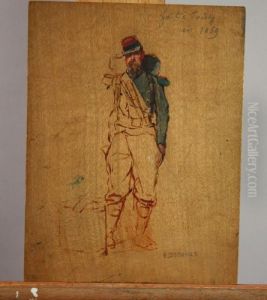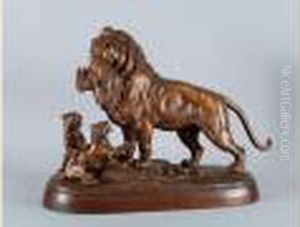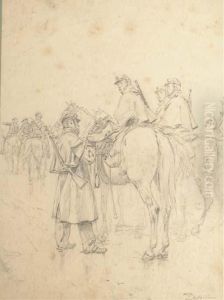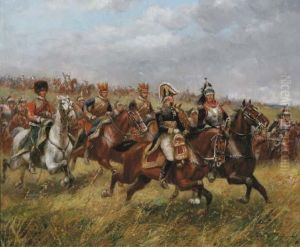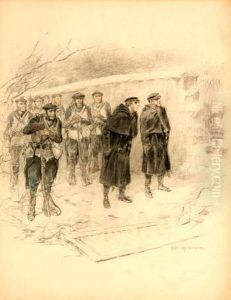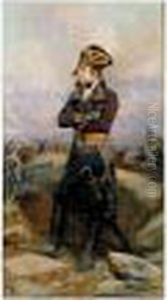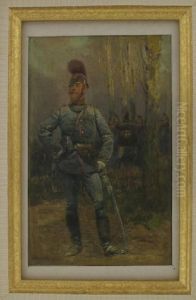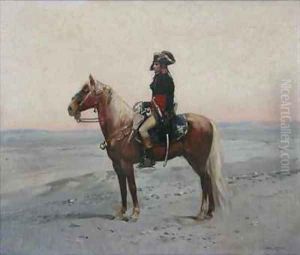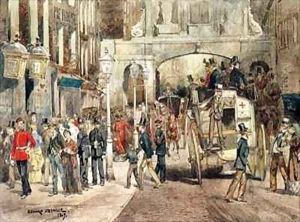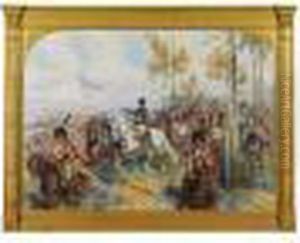Jean Baptiste Edouard Detaille Paintings
Jean Baptiste Édouard Detaille was a prominent French academic painter and military artist renowned for his precision and realistic depictions of military subjects. Born on October 5, 1848, in Paris, France, Detaille was deeply influenced by the aftermath of the Franco-Prussian War and the Paris Commune, which shaped much of his early work and thematic focus. He studied under Jean-Louis-Ernest Meissonier, a master of military art, who significantly influenced Detaille's style and thematic preferences.
Detaille's early works were marked by a meticulous attention to detail and a profound respect for the accuracy of military uniforms and equipment. He quickly gained recognition for his ability to capture the essence of military life and the valor of the soldiers. His paintings often depicted scenes from the Napoleonic Wars and the Franco-Prussian War, reflecting his deep interest in France's military history.
Throughout his career, Detaille exhibited at the Paris Salon, where he received numerous awards for his work. He was celebrated for his technical skill and his ability to convey the drama and intensity of battle scenes. Beyond the battlefield, Detaille also explored themes of military camp life, offering insights into the daily routines and camaraderie among soldiers.
Detaille's commitment to realism extended to his extensive research and collection of military uniforms and artifacts, which he used as reference materials for his paintings. This dedication to accuracy made him a valuable resource for historians and collectors interested in military history.
In addition to his paintings, Detaille also worked on several illustrated books that documented military uniforms and regalia, further cementing his reputation as an authority on military art and history. His works continue to be celebrated for their historical accuracy and artistic merit, offering a window into the military events and culture of his time.
Jean Baptiste Édouard Detaille died on December 23, 1912, in Paris, leaving behind a legacy as one of the most respected military artists of his era. His works remain highly valued by collectors and historians alike, and his influence on the genre of military art is still acknowledged today.














